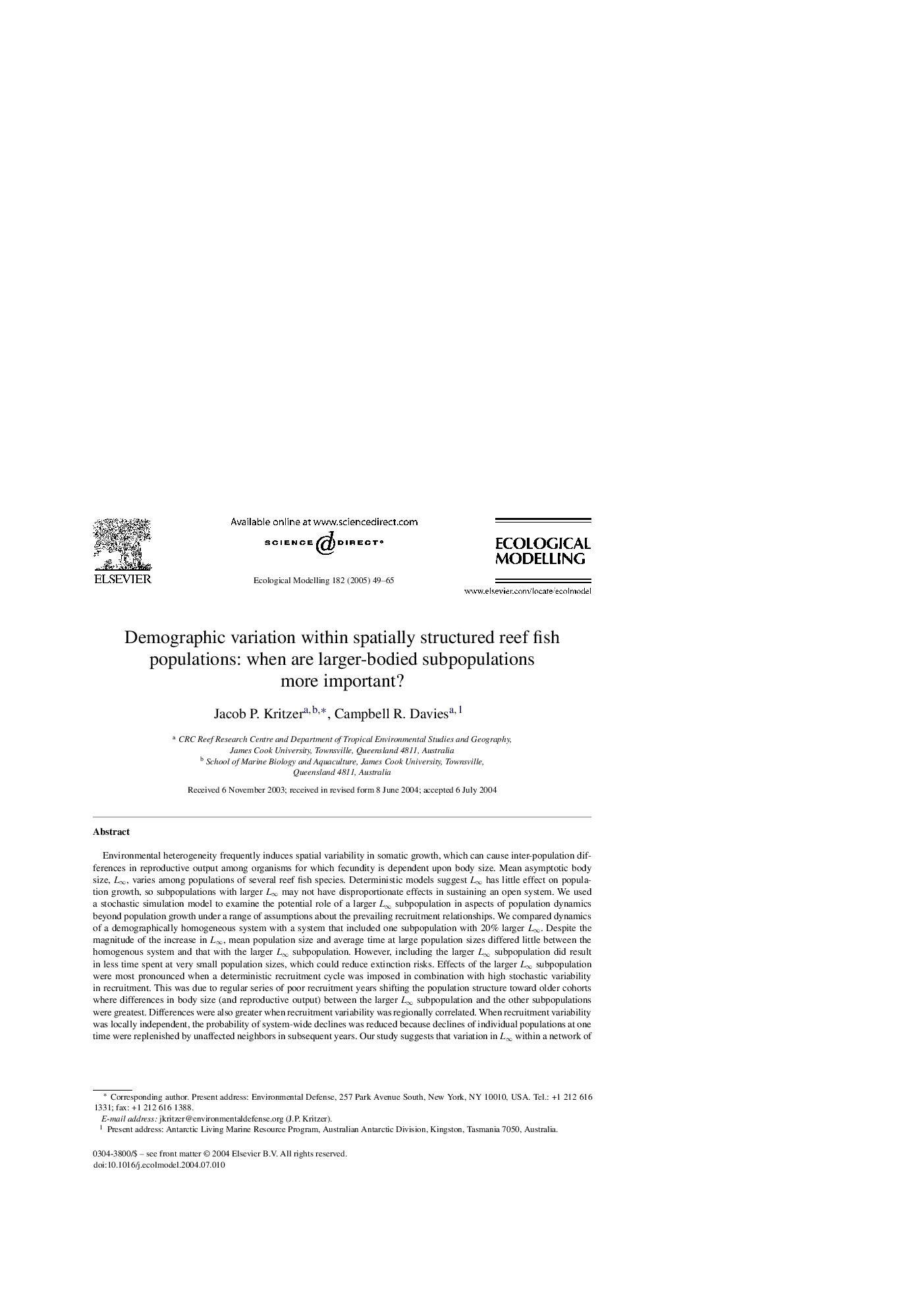| Article ID | Journal | Published Year | Pages | File Type |
|---|---|---|---|---|
| 9443633 | Ecological Modelling | 2005 | 17 Pages |
Abstract
Environmental heterogeneity frequently induces spatial variability in somatic growth, which can cause inter-population differences in reproductive output among organisms for which fecundity is dependent upon body size. Mean asymptotic body size, Lâ, varies among populations of several reef fish species. Deterministic models suggest Lâ has little effect on population growth, so subpopulations with larger Lâ may not have disproportionate effects in sustaining an open system. We used a stochastic simulation model to examine the potential role of a larger Lâ subpopulation in aspects of population dynamics beyond population growth under a range of assumptions about the prevailing recruitment relationships. We compared dynamics of a demographically homogeneous system with a system that included one subpopulation with 20% larger Lâ. Despite the magnitude of the increase in Lâ, mean population size and average time at large population sizes differed little between the homogenous system and that with the larger Lâ subpopulation. However, including the larger Lâ subpopulation did result in less time spent at very small population sizes, which could reduce extinction risks. Effects of the larger Lâ subpopulation were most pronounced when a deterministic recruitment cycle was imposed in combination with high stochastic variability in recruitment. This was due to regular series of poor recruitment years shifting the population structure toward older cohorts where differences in body size (and reproductive output) between the larger Lâ subpopulation and the other subpopulations were greatest. Differences were also greater when recruitment variability was regionally correlated. When recruitment variability was locally independent, the probability of system-wide declines was reduced because declines of individual populations at one time were replenished by unaffected neighbors in subsequent years. Our study suggests that variation in Lâ within a network of interconnected subpopulations may not be an important determinant of population behavior under certain conditions, but might be important in coping with periods of persistent, system-wide recruitment failure.
Related Topics
Life Sciences
Agricultural and Biological Sciences
Ecology, Evolution, Behavior and Systematics
Authors
Jacob P. Kritzer, Campbell R. Davies,
